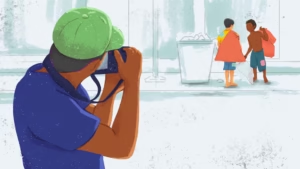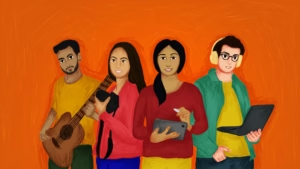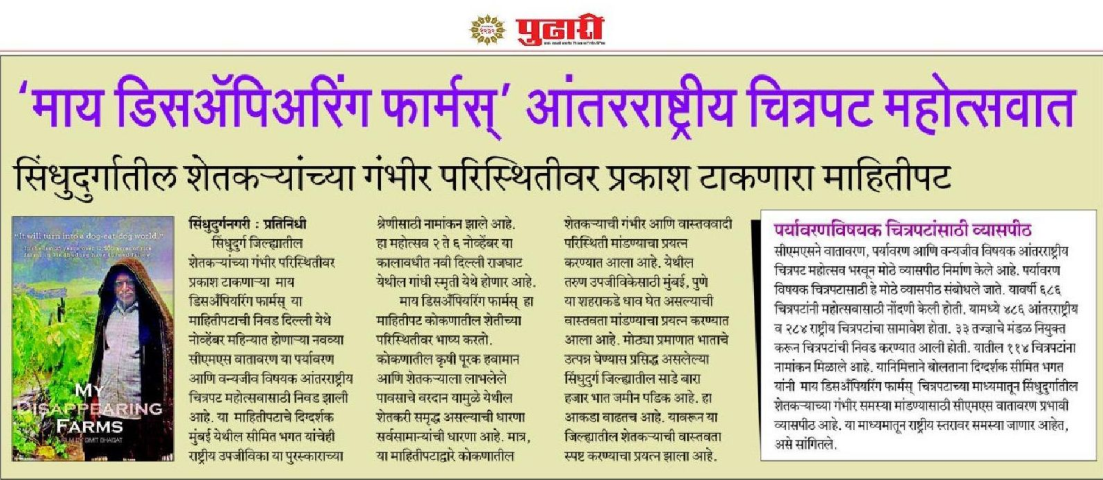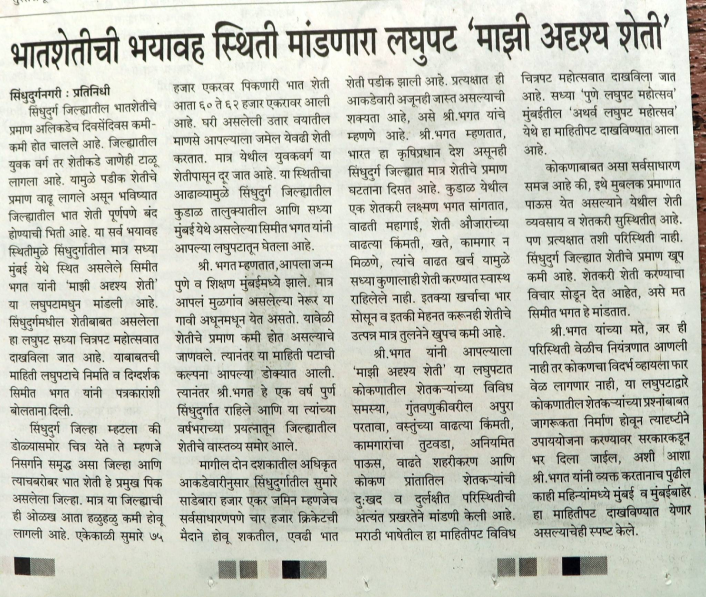In a village in Assam, women gather around a loom. They are weaving sarees, but these are no ordinary sarees. Stitched gently into the fabric are large, awkward birds with long necks and slightly hunched shoulders—the greater adjutant stork. For years, these birds were seen as dirty and unlucky. Children threw stones at them. Villagers cut down the trees where they nested.
But one woman changed that story.
Purnima Devi Barman began telling a different tale. She called them “hargila” with love. Spoke about their gentleness, their importance to the ecosystem, and how they were disappearing. She didn’t stop there. She formed an army of women—the Hargila Army—and they brought the bird into their homes, their rituals, and their stories. Sarees became their canvas. Songs became their tools. And slowly, the villagers began to see the stork differently—not as a pest, but as family.
This is what storytelling can do. It doesn’t just change minds—it changes hearts.
So how can we use storytelling to protect not just the greater adjutant, but all of India’s endangered species?
1. Begin With the Personal – Make It About Character, Not Just Species
Before we connect with conservation science, we need to connect with the subject. Not just through facts, but through feelings. The most effective stories begin by making animals familiar. Giving them names. Telling their journeys. Showing who they are, not just what they are.
Story: Collarwali – The Tigress Who Became a Mother to a Forest
In Pench Tiger Reserve, Madhya Pradesh, a tigress named Collarwali earned her name from the radio collar she wore. But what made her famous was not technology—it was motherhood. Over the years, she gave birth to 29 cubs, more than any other wild tigress recorded in India.
Rangers knew her by sight. Villagers respected her like royalty. Wildlife filmmakers followed her for years, capturing her hunts, her nurturing moments, and her aging years. Documentaries like Tiger: Spy in the Jungle brought her life into homes around the world.
Collarwali’s story wasn’t just told. It was felt.
Storytelling Elements:
Personalisation: Her life was documented in full—her struggles, her cubs, her survival.
Media representation: Her presence in global documentaries created widespread emotional connection.
Symbol of success: Her story became a living emblem of India’s Project Tiger, showing the public what protection looks like in real time.
Impact: Her legacy helped raise awareness of tiger conservation and attracted visitors to Pench, boosting eco-tourism and funding. She became a symbol of resilience and motherhood, long after she was gone.
2. Empower Communities to Tell Their Own Stories
Conservation efforts last longer when they are locally rooted. When the people who live beside wildlife become storytellers, the message is no longer distant or imposed—it’s personal. When stories are shared through local rituals, songs, and traditions, they resonate deeply and inspire action.
Story: The Hargila Army – Women Who Reclaimed a Bird
The greater adjutant stork was once rejected by Assamese communities. But when Purnima Devi Barman began engaging with local women—mothers, grandmothers, daughters—something changed.
Together, they built a movement. They turned the bird into a cultural symbol. Sarees bore its image. Baby showers were held for chicks. School children were taught songs about its nesting rituals. This was not just conservation—it was reclamation.
Storytelling Elements:
Cultural integration: The bird became part of local celebrations and religious ceremonies.
Empowerment through art: Women used embroidery and textiles as storytelling tools.
Community engagement: Puppet shows, folk performances, and education sessions spread awareness through joy, not guilt.
Impact: The Hargila population rose significantly. The bird’s status changed from “endangered” to “near threatened” by 2023. More importantly, an entire community became lifelong protectors of a species once despised.
3. Use Creative Mediums – Not Everyone Reads Reports, But Everyone Feels a Story
People don’t always respond to graphs and policy briefs. But they remember a photograph. A short film. A drawing from a child. Creative mediums open emotional pathways that scientific language often cannot.
Story: The Photo Ark by Joel Sartore
Photographer Joel Sartore wanted the world to see species before they vanished. So he created the Photo Ark—a visual archive of over 16,000 animals, photographed against black and white backgrounds.
There are no distractions in these images. Just eyes. Beaks. Claws. Fur. Expressions.
The viewer is forced to look—really look—into the eyes of animals that may soon disappear. There is nowhere else to focus. No jungle backdrop. No zoo cage. Just connection.
Storytelling Elements:
Intimate portraits: Each animal is given dignity and visibility, no matter how obscure.
Global exhibitions: The photographs are displayed in public spaces, schools, and museums.
Educational outreach: The images are used in classrooms worldwide to teach empathy and biology in equal measure.
Impact: The project has brought rare and lesser-known species into global conversation, generating funding and attention for their protection. It has also inspired thousands of young people to care deeply about animals they’ve never seen in person.
4. Celebrate What’s Working – Hope Inspires More Than Guilt
Conservation stories don’t always need to be warnings. Sometimes, the most powerful message is that progress is possible. Celebrating success gives people energy to stay involved.
Story: The Revival of the One-Horned Rhinoceros
Once poached mercilessly for their horns, the greater one-horned rhino faced extinction. But in Kaziranga National Park, protection efforts intensified. Rangers patrolled round the clock. Poachers were stopped. New populations were translocated to Dudhwa to expand their territory.
Today, Kaziranga is home to over two-thirds of the world’s one-horned rhinos.
Storytelling Elements:
Narrative of resilience: The story frames the rhino not as a victim, but as a survivor.
Community involvement: Locals work in anti-poaching patrols and education drives.
Educational campaigns: Schools across the region teach children that the rhino is a national treasure, not a danger.
Impact: The rhino population has grown steadily. Community support is high. And globally, India is seen as a model of large-mammal recovery.
5. Bridge Science and Emotion – Let the Data Be Felt
Research is the foundation of conservation. But it is storytelling that carries it into people’s hearts. When scientific knowledge is paired with personal narrative, it becomes unforgettable.
Story: Wildlife Messengers – Where Researchers Become Storytellers
In the Tambopata region of Peru, Macaw Project followed conservationists and local communities working together to protect macaw populations. But the film wasn’t made by a distant film crew. It was shot by the researchers themselves.
We see them climb trees to check on nests. Record data by torchlight. Sit with villagers to explain macaw behaviour. The story becomes human, vulnerable, immediate.
Storytelling Elements:
Authentic narratives: By handing the camera to the researchers, the storytelling remains raw and intimate.
Community involvement: Locals are not side characters—they are central to the solution.
Educational clarity: Complex science is translated into simple, emotional terms that everyone can grasp.
Impact: The documentary reached global audiences, raised funding for macaw protection, and proved that conservation is not just about animals—it’s about people, too. It has become a model for community-driven conservation media.
Every powerful movement begins with a story. We at Simit Bhagat Studios help organisations bring theirs to life—through films, illustrations, and more.
If you’re ready to tell stories that inspire action, reach out to us.











